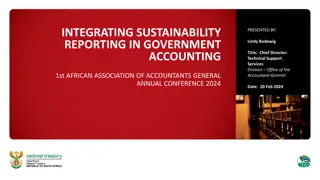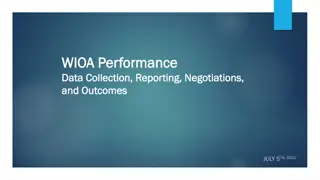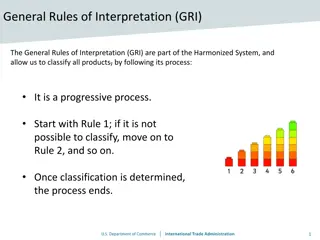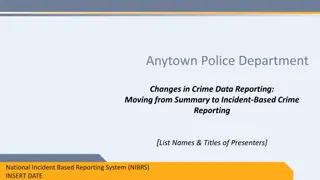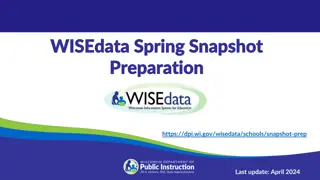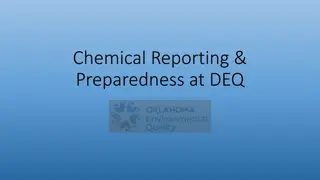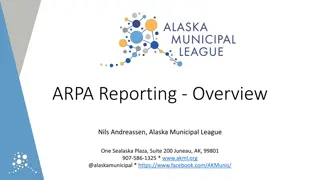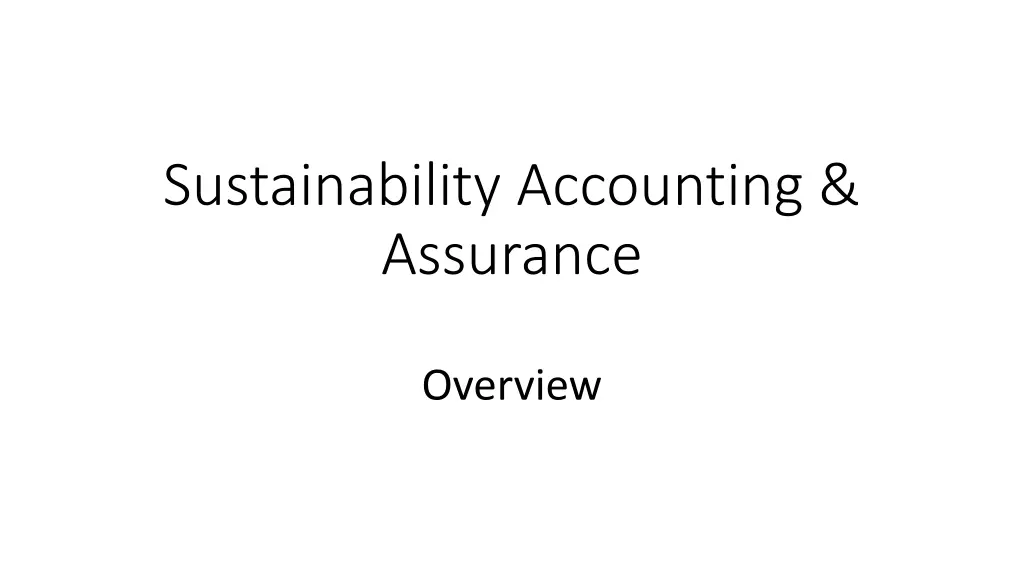
Sustainability Reporting and Stakeholder Engagement
Gain insights into sustainability reporting through GRI guidelines, principles, and stakeholder inclusiveness. Understand how organizations set goals, measure performance, and manage change to disclose impacts on the environment, society, and economy. Learn about the importance of materiality in reporting and how GRI helps standardize sustainability disclosures over time.
Download Presentation

Please find below an Image/Link to download the presentation.
The content on the website is provided AS IS for your information and personal use only. It may not be sold, licensed, or shared on other websites without obtaining consent from the author. If you encounter any issues during the download, it is possible that the publisher has removed the file from their server.
You are allowed to download the files provided on this website for personal or commercial use, subject to the condition that they are used lawfully. All files are the property of their respective owners.
The content on the website is provided AS IS for your information and personal use only. It may not be sold, licensed, or shared on other websites without obtaining consent from the author.
E N D
Presentation Transcript
Sustainability Accounting & Assurance Overview
GRI Guidelines Sustainability reporting helps organizations set goals, measure performance and manage operational change Sustainability reporting discloses impact be it positive or negative on the environment, society and the economy Sustainability reporting makes abstract issues tangible and concrete Sustainability reporting assists in understanding and managing the effects of material developments on an organization s activities, strategy
GRI Guidelines GRI provides guidance on how to present sustainability disclosures in different reporting formats: sustainability reports, integrated reports, annual reports or CSR reports Integrating strategic sustainability-related information with other material financial information is significant to stakeholders Sustainability is central to change that companies, markets and society navigate Sustainability information that is relevant or material to a company s valuation should be at the core of reporting
GRI Guidelines Global disclosures and metrics enable information contained within sustainability reports to be made accessible and comparable GRI provides stakeholders with enhanced information to inform decisions GRI helps prepare sustainability reports that contain valuable information about the organization s most critical sustainability-related issues GRI helps standardize sustainability reporting over time Materiality makes reporting relevant, credible and user-friendly GRI helps organizations focus on strategic goals and manage social impact
G4 Principles CONTENT The principles for defining content describe the process of identifying what information the report should cover The consider the organization s activities, impact and key expectations and interests of stakeholders Materiality reflects the organization s significant economic, environmental and social impacts that substantively influence the assessments and decisions of stakeholders
Stakeholder Inclusiveness Principle: The organization should identify its stakeholders, and explain how it has responded to their reasonable expectations and interests Stakeholders can include those who are invested in the organization as well as those who have other relationships to the organization The reasonable expectations and interests of stakeholders are a key reference point for many decisions in the preparation of the report
Completeness Principle: The report should include coverage of material aspects and their boundaries, sufficient to reflect significant economic, environmental and social impacts that enable stakeholders to assess the organization s performance in the reporting period Completeness primarily encompasses the dimensions of scope, boundary and time The concept of completeness may also be used to refer to practices in information collection and whether the presentation of information is reasonable and appropriate
Sustainability Context Principle: The report should present the organization s performance in the wider context of sustainability The underlying question of sustainability reporting is how organizations contribute to the improvement or deterioration of economic, environmental and social conditions Reporting only on trends in individual performance (or the efficiency of the organization) fails to respond to this underlying question Reports should seek to present organizational performance in the context of the limits and demands at the sector, local, regional or global level
Materiality Principle: The report should cover aspects that reflect the organization s significant economic, environmental and social impacts Organizations are faced with a wide range of topics Relevant topics are those that are considered important to stakeholders and may reasonably influence their decisions Materiality is the threshold at which aspects of the business become sufficiently important to be reported
G4 Principles QUALITY The principles for defining quality guide choices on ensuring the depth of information in the sustainability report, including its proper presentation The quality of the information is important to enable stakeholders to make sound and reasonable assessments of performance and take appropriate actions Quality principles are fundamental to achieving transparency
Balance Principle: The report should reflect positive and negative aspects of the organization s performance to enable a reasoned assessment of overall performance The overall presentation of the report s content should provide an unbiased picture of the organization s performance The report should avoid selections, omissions or presentation formats that are reasonably likely to unduly influence a decision or judgement by the report reader
Comparability Principle: The organization should select, compile and report information consistently. Present information in a manner that enables stakeholders to analyze changes in the organization s performance over time Comparability is necessary for evaluating performance. Stakeholders using the report should be able to compare information against the organization s past performance, objectives and performance relative to other organizations
Accuracy Principle: The reported information should be sufficiently accurate and detailed for stakeholders to assess the organization s performance Responses to economic, environmental and social indicators can be expressed in many different ways, ranging from qualitative responses to detailed quantitative measurements The characteristics that determine accuracy vary according to the nature of the information and the user of the information
Timeliness Principle: The organization should report on a regular schedule so that information is available in time for stakeholders to make informed decisions The usefulness of information is closely tied to whether the timing of its disclosure to stakeholders enables them to effectively integrate it into their decision-making The timing of release refers both to the regularity of reporting as well as its proximity to the actual events described in the report
Clarity Principle: The organization should make information available in a manner that is understandable and accessible to stakeholders using the report Information should be presented in a manner that is comprehensible to stakeholders who have a reasonable understanding of the organization and its activities
Reliability Principle: The organization should gather, record, compile, analyze and disclose information and processes used in the preparation of a report in a way that they can be subject to examination Assures the quality and materiality of the information Stakeholders should have confidence that a report can be checked to establish the veracity of its content and the extent to which it has appropriately applied standardized reporting principles
GRI Standard Disclosures Strategy and Analysis Organizational Profile Material Aspects and Boundaries Stakeholder Engagement Report Profile Governance Ethics and Integrity
GRI Specific Disclosures (Indicators) ENVIRONMENTAL SOCIAL LABOR PRACTICES HUMAN RIGHTS SOCIETY & PRODUCT RESPONSIBILITY
GRI Specific Disclosures (Indicators) ECONOMIC The economic dimension of sustainability concerns the organization s impacts on the economic conditions of its stakeholders and on economic systems at local, national, and global levels. It does not focus on the financial condition of the organization. This category illustrates the ow of capital among different stakeholders, and the main economic impacts of the organization throughout society.


